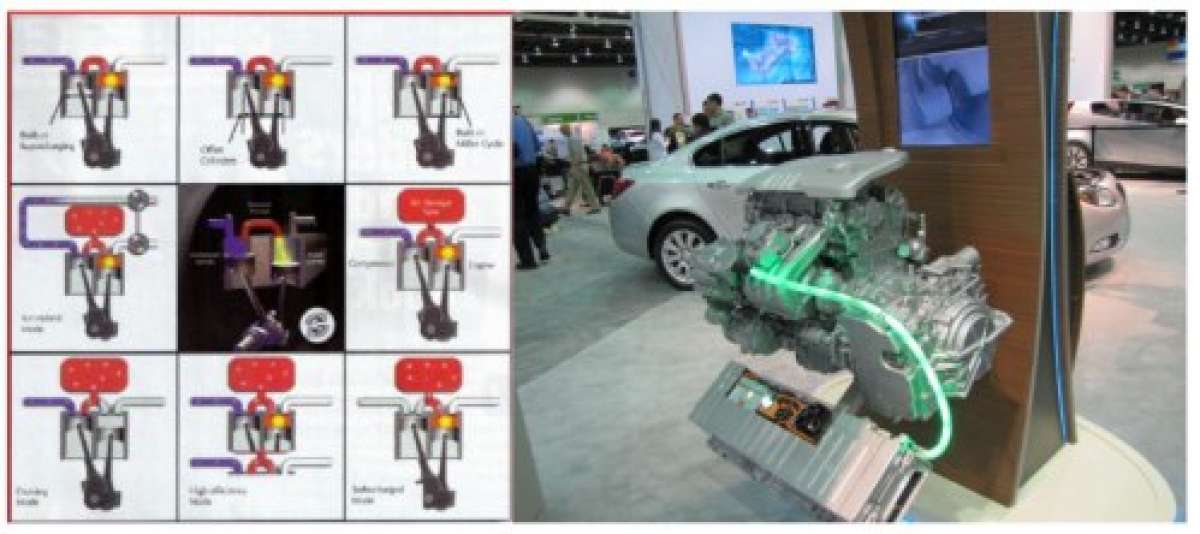Full electrification is expensive; you know it; I know it. Witness the cost of the Chevy Volt and the Nissan Leaf even after the government subsidy. Who can afford a $450 per month lease payment? For certain, those on fixed incomes cannot.
No matter how much the cult of full electrics cry out that the cost justifies the benefits, simple fact is, the public needs affordable electrification of the automobile.
It is not so much that public hates electrification. Fact is, they don’t. They just want to be able to afford it on the wages that they earn.
Enter the Chevrolet Malibu Eco, for example. Now here is a car that meets the public somewhere in the middle. To set the stage, though, consider how the Chevrolet Malibu Eco achieves an EPA-estimated 25 miles per gallon city and 37 mpg highway fuel economy. Read the latest TN report by John Goreham: 2013 Chevy Malibu Eco (don't call it a hybrid) saves customers big money on fuel
Electrification on the Light Side
I have been witness to other electrification members at the various shows as well. One that comes to mind is the electric supercharger. It avails supercharging without the use of exhaust [correction: turbo is implied]. This makes that lag at low RPM literally disappear.
Keep in mind, though, with hybrids there is really no advance full-electric propulsion that negates all use of the ICE. That's why I view the Chevy Malibu Eco as indeed a hybrid, but with a flair that keeps the cost affordable. It uses electric steering as well as eAssist technology.
Point is, these particular choices of electrification are considered electric-light, because they do not negate the IC engine, but improve the energy drain, thus improving gas mileage. Besides, it is a key feature to stop-start whereby the engine shuts off whenever the car stops at red lights.
So, on-demand is an important aspect to light electrification. For example, electric power assist steering operates on demand, consuming power only during steering maneuvers instead of constantly draining engine power to operate a hydraulic pump. In addition it reduces CO2 emissions and maintenance cost by eliminating the need to dispose of hydraulic fluid.
For the record, I have packaged both hydraulic as well as electric assist steering systems when I was part of the vehicle integration design team. Electric steering saves on the outside packaging, but introduces that bulky electric motor into the interior just above the shins off the driver. Trust me when I state that it’s no picnic routing wires around it, as well as providing enough space for the bolster to protect the knees.
The EPS system which stands for Electric Power Steering, constantly measures the driver’s steering input, adapting to changing road conditions, thus helping to compensate for slight directional shifts caused by factors such as uneven road surfaces or crosswinds. Chevrolet even says it makes low-speed parking maneuvers feel practically effortless, delivering a higher degree of steering feel at higher speeds, and can be tuned to various driving modes, such as “comfort” and “sport” in some models. One additional benefit is the reduction in vibration that transfer through the steering wheel.
Air Hybrid
To get this level of technology, you have to use the split-cycle engine. Invented long ago, it didn’t come to fruition until inventors and developers like Scuderi modernized the approach that bears his name under Scuderi Engine. Another inventor of the IC engine split cycle is Hugo Tour of Tour Engine which has an opposed piston arrangement.
The greatest benefit aside from the gains in thermodynamic efficiency is the air hybrid component. Think about it. If one half of the 4-cycle is intake and compression, then that compressed air can also be stored, as the cold cylinder can be sized to do both.
One portion goes to the hotter power-exhaust piston, while the other portion can be stored for later use inside a collector tank. In that manner, low speed application at red lights can be fed by compressed air. Also reference the article, Scuderi split cycle engine patent cites Miller Cycle advantages
For the record, busses are using similar technology as well to make its form of hybrid propulsion. Refer to: Altair unveils world's first hydraulic-hybrid transit bus
Conclusion
I have to agree with a quote within the latest GM news release about the Malibu Eco. It says, “There is no silver bullet for improving fuel efficiency. It’s the many small improvements like electric power assist steering, as seen on the new Malibu that contribute to significant savings for our customers.”
Furthermore, while the eAssist for Buick and the Chevy is quite impressive, I tend to think the split-cycle engine will give it a run for its money; especially when the air-hybrid is taken into account. After all, the eAssist still uses an expensive lithium-ion battery. For small cars, the only other option to reduce cost will be either a lead-acid battery using the latest PbC electrodes, or simply use that air hybrid availability of the split cycle engine.
Which do you prefer?






Comments
I was unaware that
Permalink
I was unaware that superchargers used exhaust at all...
I guess you folks know more than me though.
OK, it should have read turbo
Permalink
In reply to I was unaware that by casual observer (not verified)
OK, it should have read turbo charger. Good catch, but the intent is that a turbo has lag and a supercharger does not, especially if it is electrically driven apart from the engine RPM, but used at low vehicle speeds. The turbo was implied and I made a correction comment in brackets. Feel better now?